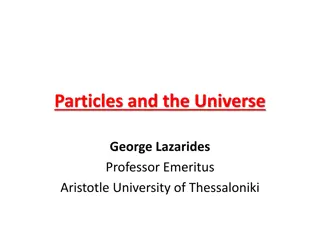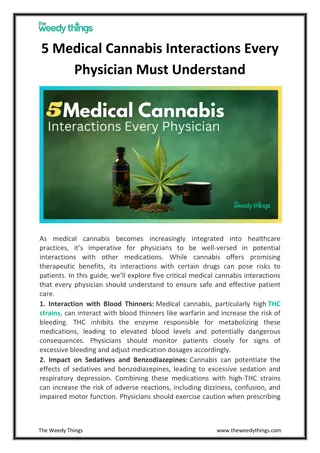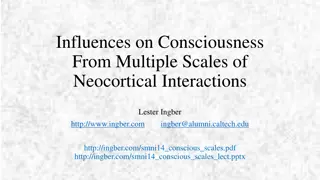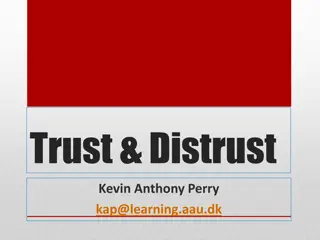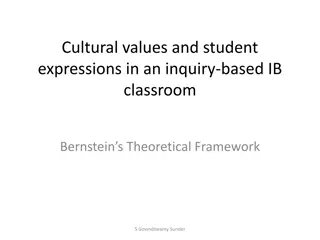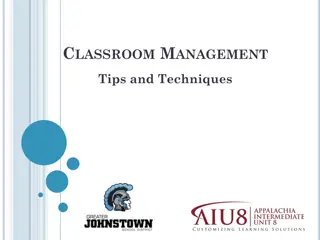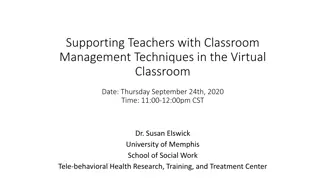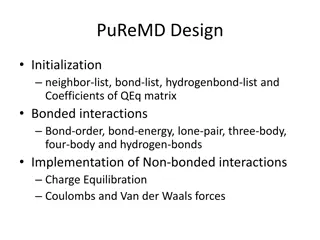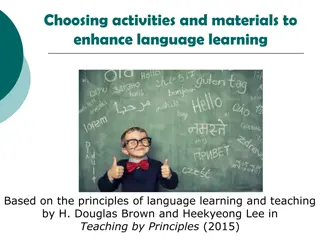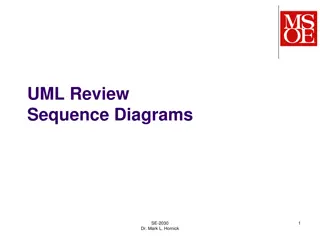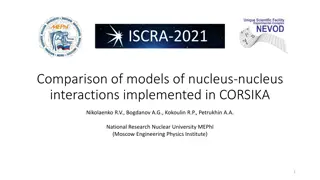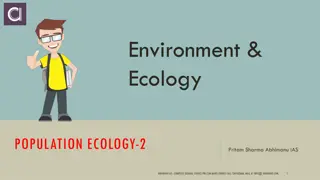Building Meaningful Interactions in the Classroom
Richhart emphasizes the importance of authentic interactions with students, highlighting attributes like empathy, warmth, and respect. By being non-directive, pressing for thinking, and shaping roles, educators can deepen student engagement and learning. Asking good questions and fostering new discourse patterns also enhance classroom dynamics.
- Classroom interactions
- Student engagement
- Meaningful relationships
- Inquiry-based learning
- Effective teaching
Download Presentation

Please find below an Image/Link to download the presentation.
The content on the website is provided AS IS for your information and personal use only. It may not be sold, licensed, or shared on other websites without obtaining consent from the author. Download presentation by click this link. If you encounter any issues during the download, it is possible that the publisher has removed the file from their server.
E N D
Presentation Transcript
What: Discuss Richharts ideas surrounding Interactions (Chapter 8) . Why: Do not think that because a child cannot read a text, he cannot read you. Children can tell right off those people who believe in them and those who patronize them. They can tell once you come into the room. How: Analyze a description of an activity in light of what we have already learned from Richhart, as well as our own experiences. Explore methods to improve/ deepen interactions in the classroom
Building Culture Through Affect and Actions (p 218) Affective attributes researchers identify as facilitating learning: Empathetic Warm Caring Genuine Authentic Positive Respectful Trusting Sense of Humor
Building Culture Through Affect and Actions (p 218) Actions you can take Being nondirective (Meaning that you are not controlling. This isn t a push to have no direction or take no role in directing the class) Pressing for Thinking Supporting Student Autonomy
Shaping Interactions Through Roles (p 220) This is where all of the Thinking Routines, Literature Circles, Reciprocal Teaching and Norm Setting come in Be open to new roles Original Thinker Johnny Opposite Reliability Cop Mind Reader Cleaning Crew Theorizing Summarizing Results Relating results to theory Biggest learning effects occurred when students took on these roles not only as they engaged in building scientific explanations but also when listening as audience members to other groups.
Asking Good Questions (p 221) Review Questions- Ask students to recall previous knowledge or procedures Procedural Questions- Direct classroom activity and behavior rather than content Does everybody have a pencil? Generative Questions- Spark inquiry. Essential Questions- Direct long-term exploration Authentic Questions- Content questions you don t know the answer to. Constructive Questions- advance understanding. Ask students to connect ideas, make interpretations, focus on big ideas, etc. Facilitative Questions- Ask students to explain or elaborate thinking, to make it visible.
Creating New Patterns of Discourse (p 223) Traditional Interaction in classroom is QRE/ IRE- Looks like Ping-Pong If classes look more like basketball, more students are engaged. Some ideas for moving from ping-pong to basketball Sentence Starters (Talk Tips) Pop Corn/ Building Ice Cream Cone Reflective Toss Teacher s first goal is to catch the students meaning and understand the comments. If meaning isn t caught, clarify with follow up questions. Once meaning is understood, toss back a question that will force student to further elaborate/ justify their idea.
What roles are students currently filling in your class? What roles would you like them to fill? What subject specific skills/ abilities do they need to use to be proficient in your content? Can you create roles out of these?



